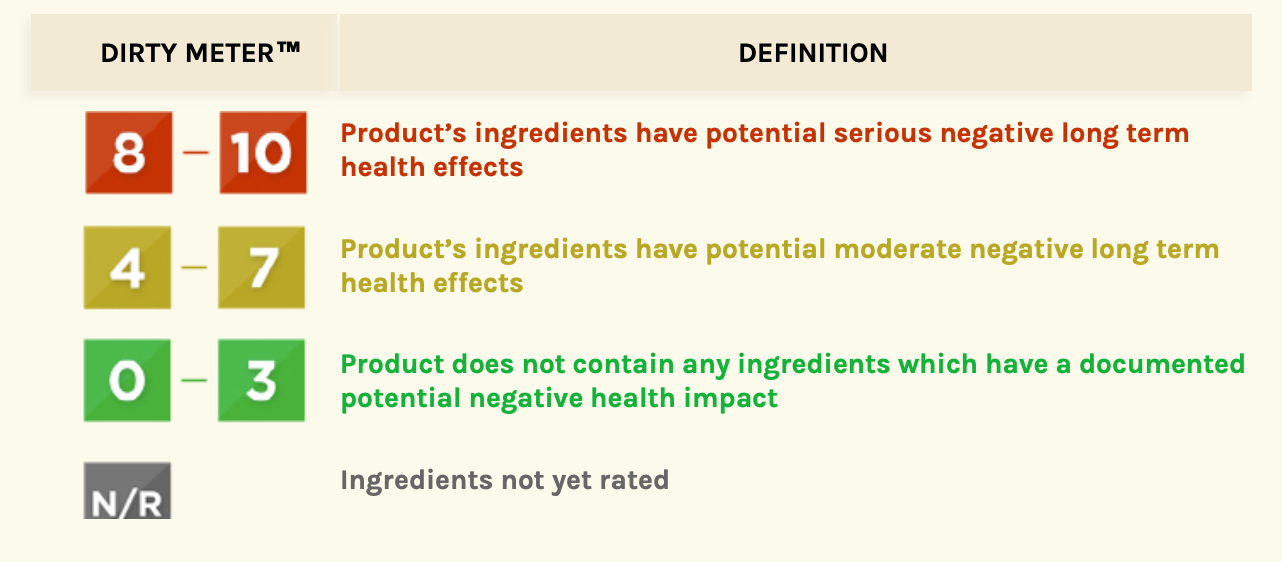Fact Check No. 1 - Think Dirty App
Fact Check No. 1 - Think Dirty App
Like most of my ideas, this started after seeing a few people talking about the Think Dirty App on Instagram. With that I wanted to turn it into more of a fact-checking series because research is something I love to do. Especially when it comes to things influencers/bloggers share on Instagram. I think it’s always good to hold anyone accountable but especially those who have a big following, and therefore a big influence.
I’ve shared two mini fact-checks in my Instagram stories after a brief search (they’re in saved stories if you’re curious) and I want to expand on those here, but I wanted to start with the Think Dirty App because being eco friendly and buying ‘clean’ products is important, but it’s also important to share factual information about what’s clean and what’s harmful or hazardous.
What is the Think Dirty app?
The Think Dirty app launched in 2013 and according to its website is “committed to helping consumers identify the potential risks associated with the personal care products they use every day.”
How does the app work?
On their website they have a page about their methodology:
The founder and CEO is Lily Tse, she has bachelor degrees in Visual Arts design and graphic design. That’s not said to be a slight towards her or her degrees, but that’s kind of the only transparency I’ve found in the people behind the app. You can see above they mention a list of experts they have on their team, but I couldn’t find any names or faces to put behind that.
The Research
In researching this app, I watched two Youtube videos that I recommend watching; both women are very knowledgeable. The first was a video from Kenna who is a biochemist. One thing she points out is how the rating system makes no sense. Ingredients in the product get ratings and then the product itself will get an overall rating. In Kenna’s video she looked at the Pacifica Tuscan Blood Orange Perfume which has an overall rating of zero, however ingredients have a rating of three, three, two, and two. So how do they get to zero? Well, that’s the thing - we don’t know.
Kenna also mentioned in a “dirty” product she looked at, the fragrance ingredient received an eight, so the overall product received an eight as the rating. So it doesn’t seem like the same set of logic is being used for “clean” products that is being used for “dirty” products.
I think it’s also a little suspect that on their website they have different subscription box services. Kenna mentioned in her video that it feels like because of that aspect, this app makes more sense as a marketing tool for those brands than actually telling us what is and isn’t toxic. And I’d have to agree on that. In my mind if this app is all about hazardous products and ingredients, I would expect the website to have more information, links to studies, and generally just provide more knowledge about what they’re saying and support on the claims they’re making.
The second video I watched comes from Dr. Dray. First, one great thing about her video, she includes all of her references in her video description and in her video includes why she herself is a reputable source of information and an expert in dermatology because she is a board certified dermatologist who completed a residency and passed a certifying exam, she’s a practicing and licensed dermatologist. So she gives a name and face as well as credentials, which is more than the website of this app does, to prove “okay, we can trust what she’s saying as she’s interpreting her references.”
One thing both Kenna and Dr. Dray point out is the app seems to have an issue with parabens and preservatives. Kenna has a full video separate from the one linked above all about the misinformation surrounding those ingredients. Dr. Dray points out that the app “fails to recognize the merits of preservatives” and the fact that beauty protects risk bacteria that is actually harmful to us if the products don’t have preservatives in them.
Another great point that Dr. Dray makes is “it’s not the poison, it’s the dose.” So while some of the ingredients the app may flag have the potential to be harmful to us, it doesn’t take into account the amount of that ingredient that’s in the product compared to the amount that would actually have the hazardous effects the app claims.
Lastly, the app flags allergens as hazardous. Which could be hazardous to a certain person, but that doesn’t mean it’s hazardous to everyone. I can’t eat gluten, it is actually harmful to me, but that doesn’t mean everyone can’t eat gluten. But that’s essentially what this app says, if fragrance is irritating to one person, it must be toxic to everyone.
The Takeaway
Overall the ingredients just aren’t put into context. That’s the biggest takeaway from both these videos. If the ingredients were taken into consideration in the way it’s used in the product and how much, the app would be much more reliable and actually useful than it is currently. As it stands, the rating system is unclear and confusing, and it’s hard to understand how they come to their conclusions. It would seem you’re better off googling ingredients and products on your own then turning to the app for a supported and accurate review.



